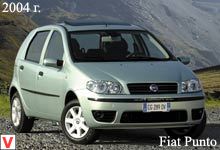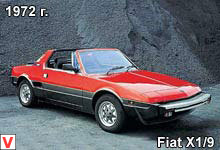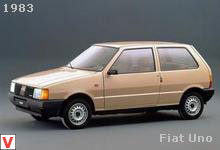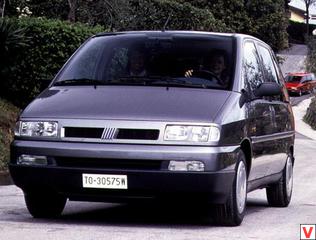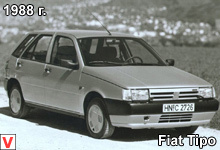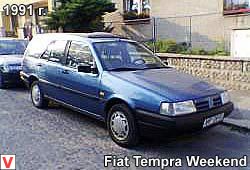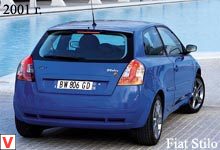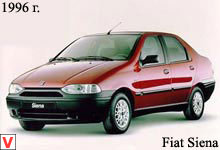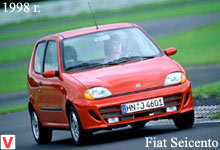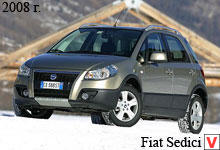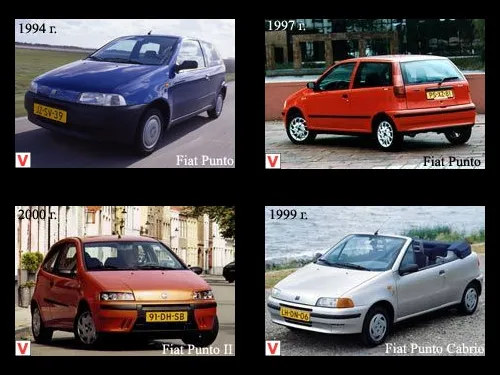
Small-sized front-wheel drive Punto (in translation - the point), which debuted in 1993, became a real bestseller in Europe. He replaced the Fiat Uno model. During production, the Punto has not been significantly upgraded and restyled, but the power units have been updated many times. The car was produced with three body types: the 5th and 3-door hatchback, as well as the convertible, which appeared in 1994. Punto of the first generation was equipped with 1.1 l / 55 hp engine, equipped with central injection, low-power, but economical: consumed 7 liters per 100 km. The "sport" versions had a 1.6-liter 88-horsepower or 1.4-liter 133-horsepower engine under the hood.
They will certainly please the ambitious driver with excellent dynamics, but they also have more fuel consumption. "Golden mean" can be called a 1.24-liter engine producing 74 hp This power unit with distributed injection, combines acceptable dynamics with efficiency. Manual gearboxes were offered as 5-speed and 6-speed. The hydromechanical box on the Punto was not used, instead it was a short-lived stepless variator. The first generation lasted on the conveyor until 1999. His total circulation was more than 3 million copies. He was replaced by Fiat Punto II.
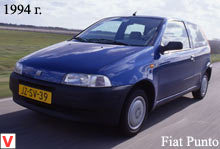
The front-wheel hatchback was produced in 3 and 5-door versions, and until 2000, the Punto bodywork also had a cabriolet version, built, however, based on the previous generation. Punto II has almost achieved the success of its predecessor, despite the presence of many competitors in this market segment. Punto II, created on a new platform, is very different from the first-generation model.
The designers have eliminated all the weaknesses of the predecessor, and, according to statistics, the car has become much more reliable. By the way, the warranty on the body against rust corrosion is 8 years. The strength of the Fiat Punto image is its appearance. Designers managed to combine the high body capacity with elegance and expressiveness. The car has acquired a more aggressive plastic and solidity, although the characteristic silhouette remained the same.
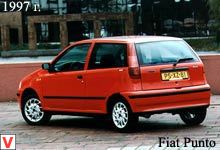
Inside the Fiat Punto is much more spacious than it might seem from the outside. The steering pad is height adjustable. Thanks to a more vertical landing, a good overview of the front and side, as well as enough legroom for rear passengers, which can be three. In addition to the basic models with petrol engines of 1.2 liters (8-valve capacity of 60 hp, 16-valve - 80 hp), economical pre-chamber 1.2-liter diesel (60 hp) and new high-torque turbo diesel 1.2 l with a torque of 186 Ntm and a Common Rail system (80 hp), there is a sports modification of the Punto HGT with a forced engine of 1.8 l, 131 hp and 6-speed manual gearbox.
Installed on the HGT version of the engine with adjustable intake manifold length and variable valve timing, has remarkable dynamic characteristics: the maximum speed is 205 km / h, and acceleration to hundreds - 8.6 s. There are in the range and 1.9-liter (80 hp) JTD family of diesel engines with turbocharging and Common Rail fuel injection system, as well as its atmospheric version, issuing only 60 hp. Since spring 2003, sales of the updated Punto began in Europe. In addition to improved styling, the upgraded hatchbacks feature new trim materials, a steering wheel, an instrument cluster and an aluminum-trimmed center console. External changes Punto cardinal not name.
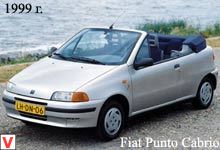
Successful back part did not touch at all. The main changes affected, above all, the front of the car. There are new headlights with transparent receivers, grille (before that there was a small gap in that place) and a new bumper. In general, the updated Punto looks more sporty and “toned up” than its predecessor. Exterior car can not be denied the expression, originality and harmony. It became more similar to traditional European models, but at the same time lost part of the charm of Italian design. The interior of Punto has also undergone renovation, in the decoration of which new materials are now used, as well as recently fashionable aluminum inserts.
Ergonomics driver's seat well thought out. There are seat height adjustment and various positions of the lumbar support. The wheel is regulated only in a vertical plane. In the back seat legroom, by the standards of class B, is enough. Another important piece of comfort - insulation.
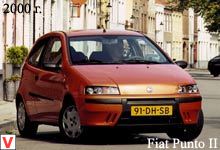
In Punto, everything is done at the highest level - the engine is not annoying with its sound, there are no unnecessary noises when driving. In standard, the car is equipped with a dual-band electric power steering. And there is an interesting feature in it: after pressing the button on the center console, the amplifier increases its efficiency - the city mode turns on, and then the steering wheel becomes the lightest, of course, while the information content drops to zero. If you forget to switch the amplifier to the normal position, it will be done by the automatic when the speedometer reaches 60 km / h.
When switching to the “track” mode, the steering wheel becomes heavier, the feedback from the road improves. Gamma of engines: base 1.2 liter R4 8V of the Fire family (60 hp, 102 hp), more modern engine of the same volume R4 16V (80 hp, 114 Nm), 1.4 l R4 16V (95 hp, 128 Nm), and the top version of the HGT is equipped with a 1.8-liter R4 16V engine, developing 130 hp and 164 Nm. In addition, three turbo diesel engines are available to choose from - the new 1.3 L R4 16V Multijet (70 hp, 180 Nm) and 1.9 L R4 8V Multijet (100 hp, 260 Nm) installed on the HGT, as well as 1.9 liter R4 8V JTD (85 hp, 196 Nm).
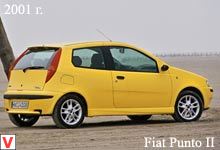
The gearboxes are 5-speed “mechanics” or 6-speed automatic gearbox of the Speedgear, and 6-speed robotic gearbox of Dialogic is optionally offered. Additional equipment includes dual-zone climate control, a new help system at the start of Hill Holder, and dynamic stabilization system ESP and ABS.
Other images auto Fiat Punto
